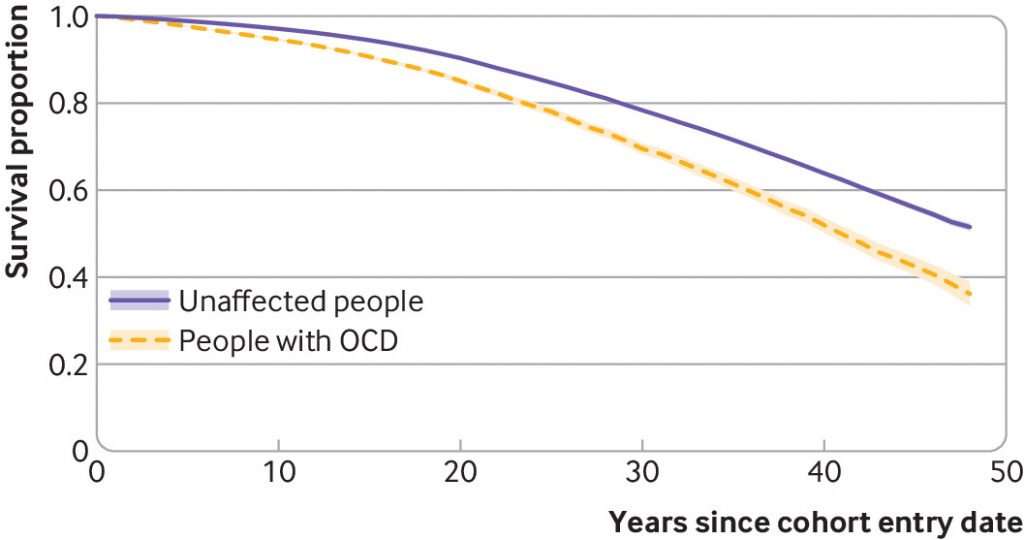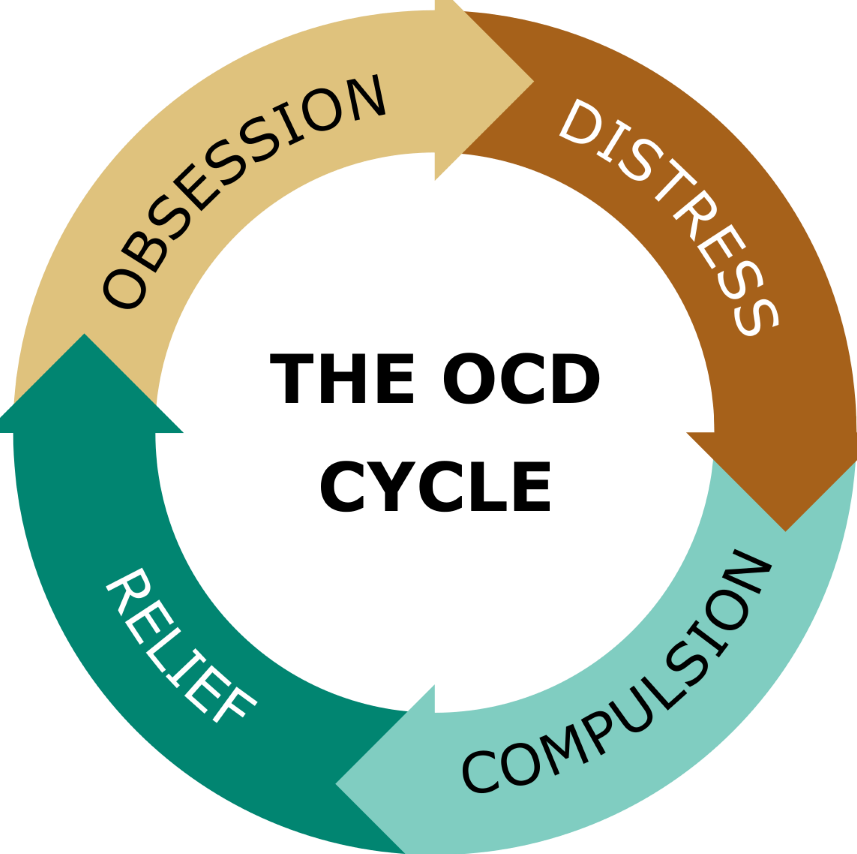The great writer Samuel Johnson once wrote, “The chains of habit are too weak to be felt until they are too strong to be broken.” Routines based on bad practices and impractical ideas are often difficult to overcome. These routines grip onto fear and take control of any actions and thoughts. They creep out of seemingly nowhere and become extremely difficult to work through. This is Obsessive Compulsive Disorder or OCD. It is a psychological disorder that causes someone to have repetitive thoughts (usually negative and fueled by fear). In return, the person engages in certain behaviors to try and take back control. This is harmful and can lead to a cycle of negative patterns that could harm someone in the long run.
Obsessions stem from certain topics such as illnesses, perfectionism, and taboo thoughts about things such as religion or violence. This isn’t the same as being obsessed, though. Being obsessed with something usually stems from a topic of interest. OCD obsessions, however, are unprovoked and can be disturbing. They cause anxiety and induce fear. To get rid of that fear, compulsions are required. Compulsions manage the distress and stress of an obsession. For example, if someone is obsessed with staying clean and avoiding being ill, they might wash their hands. This action can be repetitive until it feels “right” or the person is no longer experiencing those thoughts. These compulsions can lead to maladaptive behavior, making things more difficult to manage and control.
So, what leads to this kind of thought process? The National Institute of Mental Health states that the cause is unknown. Evidence can suggest factors such as genetics, brain structure, and trauma, but nothing gives a definitive explanation. It’s harder to treat because there isn’t a known, reliable cause. It can’t be “cured”. Symptoms can be relieved and made more manageable, but for most with the disorder, that voice of unreasonable fear and anxiety always sits in the back of their head. According to the International OCD Foundation, SRIs, or Serotonin Reuptake Inhibitors, along with SSRIs, Selective Serotonin Reuptake Inhibitors, can help reduce symptoms in some cases. These increase serotonergic neurotransmission.
A big debate about OCD stems from the argument of whether it should be classified as a type of anxiety disorder or a separate category. Something to point out is that the medicines commonly used to help control OCD are some of the same ones used for depression and panic disorders. This can provide insight into the idea that OCD can come from the same area in the brain as other similar disorders. Cognitive behavioral therapy is also a way to help treat OCD by practicing exposure and response prevention. This helps minimize compulsions after engaging in an obsessive thought.
OCD represents “cleanliness” and “perfectionism.” While this can sometimes be the case, it’s usually a harmful stereotype. It can make people feel like what they are experiencing is wrong or incorrect. Among the many subtypes of the disorder, four main categories seem to explain the most common obsessions. These are checking, contamination, symmetry, and ruminations/thought OCD. Overall, it affects about 2.3% of the population. It distorts reality into an unrealistic perspective that causes feelings of depression, loneliness, and excessive paranoia. Although the causes and cures aren’t solid, people can get help. Being supportive of those who open up about their feelings and struggles with OCD is crucial to making sure that help can intervene before more damage can be done. Some people may have increasingly disturbing thoughts and feelings that don’t have any limitations. In extreme cases, some believe they are criminals, pedophiles, or worse. This can cause deep self-loathing, depression, loneliness, and excessive paranoia. These feelings also stay persistent in those who have less extreme cases. Sometimes, OCD can spiral into a horrible end. According to Lorena Fernández de la Cruz and Kayoko Isomura’s study, suicide was the most prominent death of people with OCD (a nearly fivefold increased risk), and overall, “…people with OCD had 82% higher risk of dying from all causes compared to people without OCD” (de la Cruz, et. al). This is representative of the conclusion that OCD is maladaptive and should be treated as seriously as any other disorder.

“Kaplan-Meier survival curves (with 95% confidence intervals) in people with obsessive-compulsive disorder (OCD) and matched unaffected people” (de la Cruz, et. al)
Even through all the negatives, help should always be available. Those who are struggling should never be embarrassed to ask for it either. The chains of OCD can be broken, and the bad habits of compulsive behaviors can be destroyed.
Sources
Fernandez de la Cruz, Lorena, et. al. “All cause and cause specific mortality in obsessive-compulsive disorder: nationwide matched cohort and sibling cohort study.” The BMJ, 22 November 2023, https://www.bmj.com/content/384/bmj-2023-077564. Accessed 12 November 2024.
International OCD Foundation. “How is OCD Treated?” International OCD Foundation, https://iocdf.org/about-ocd/treatment/. Accessed 11 November 2024
National Institute of Mental Health. “Obsessive-Compulsive Disorder – National Institute of Mental Health (NIMH).” The NIMH, https://www.nimh.nih.gov/health/topics/obsessive-compulsive-disorder-ocd. Accessed 11 November 2024

Leave a Reply